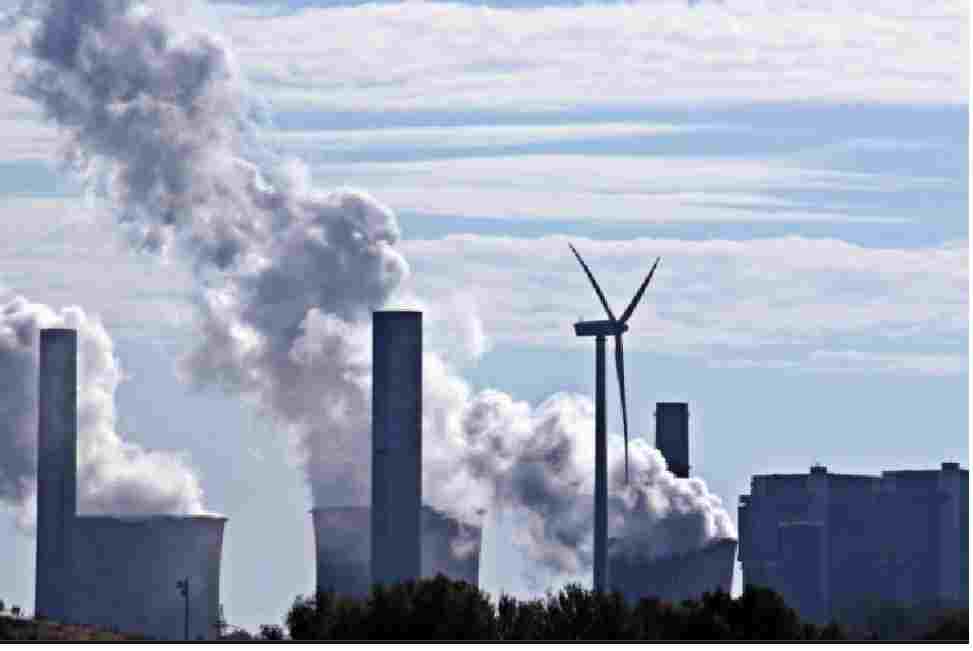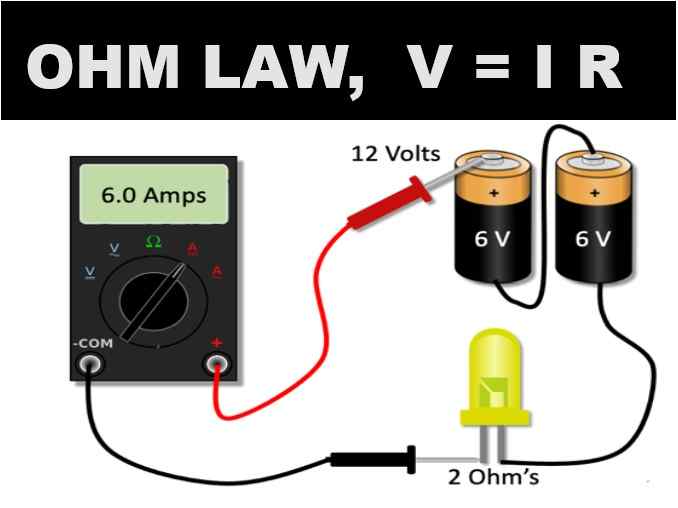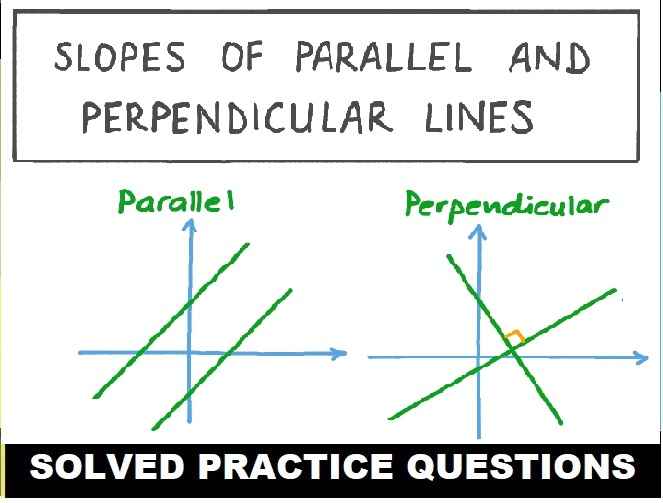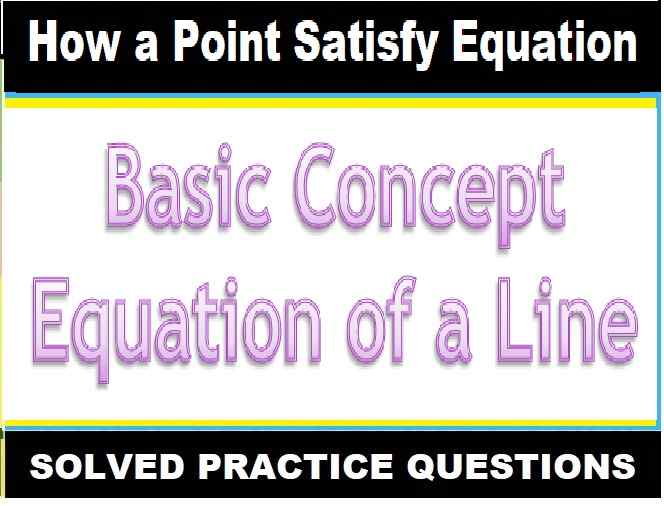Environmental Issue MCQs Type Question Class 12 for ISC Biology. These MCQs / Objective Type Questions is based on latest reduced syllabus according 2021-22 session on bifurcated pattern. Main motto of MCQ Type Question is cracking the next upcoming Sem-2 exam of council. Visit official website CISCE for detail information about ISC Class-12 Biology.
ISC Biology Environmental Issue MCQs Type Question Class 12 for

| Board | ISC |
| Class | 12th (XII) |
| Subject | Biology |
| Chapter | Environmental Issue |
| Syllabus | on bifurcated syllabus (after reduction) |
| Session | 2021-22 |
| Bifurcated | Sem-2 |
| Topic | MCQs / Objective Type Question |
Environmental Issue MCQs Type Question for ISC Class 12 Biology
Question 1: Which one of the following diseases is not due to contamination of water ?
(a) Hepatitis-B
(b) Jaundice
(c) Cholera
(d) Typhoid.
Answer : (a) Hepatitis-B
Question 2: A scrubber in the exhaust of a chemical industrial plant removes
(a) Gases like sulphur dioxide
(b) Particulate matter of the size 5 micrometer or above
(c) Gases like ozone and methane
(d) Particulate matter of the size 2.5 micrometer or less
Answer : (a) Gases like sulphur dioxide
Question 3: DDT A. is a non-degradable pollutant
B. shows biomagnification
C. is harmful to fishes and birds
D. is a pesticide
(a) Only D is correct
(b) Only B and G are correct
(c) None is correct
(d) All are correct
Answer : (d) All are correct
Question 4: Which chemical substance affects the Ozone Layer?
(a) Chlorofluorocarbon
(b) Chlorine
(c) Hexafluorocarbon
(d) Molecular Carbon
Answer : (a) Chlorofluorocarbon
Question 5: In Ozone Degradation which element acts as catalyst?
(a) Chlorine
(b) Flurine
(c) Oxygen
(d) Potassium
Answer : (a) Chlorine
Question 6: Pollution of SO2 destroys:
(a) Lichen
(b) Fungi
(c) Algae
(d) Fish
Answer : (a) Lichen
Question 7: The UN conference of Parties on climate change in the year 2012 was held at:
(a) Doha
(b) Lima
(c) Warsaw
(d) Durban
Answer : (a) Doha
Question 8: Permissible noise levels in a residential area at night time is:
(a) 35 dB
(b) 40 dB
(c) 45 dB
(d) 50 dB
Answer : (c) 45 dB
Question 9: Bluebaby syndrome results from:
(a) Excess of TDS
(b) Excess of DO
(c) Excess of chloride
(d) Methaemoglobin
Answer : (d) Methaemoglobin
Question 10: Pollutant which causes acid rain is:
(a) SO2
(b) CO2
(c) CO
(d) Hydrocarbon
Answer : (a) SO2
Question 11: Particulate matter can be removed by,
(a) Catalytic converter
(b) Converter
(c) Radioactive converter
(d) Electrostatic converter
Answer : (d) Electrostatic converter
Question 12: Joint Forest Management Concept was introduced in India during
(a) 1960s
(b) 1970s
(c) 1980s
(d) 1990s
Answer : (c) 1980s
Question 13: Eutrophication is often seen in
(a) fresh water lakes
(b) ocean
(c) mountains
(d) deserts
Answer : (a) fresh water lakes
Question 14: The world’s most problematic aquatic weed is also called
(a) Terror of delhi
(b) Terror of Mumbai
(c) Terror of Bangalore
(d) Terror of Bengal
Answer : (d) Terror of Bengal
Question 15: Substances which can be broken down into non-poisonous substances by the action of microorganisms are said to be
(a) Non-degradable
(b) Non-biodegradable
(c) Non-decomposable
(d) Biodegradable
Answer : (d) Biodegradable
Question 16: The material generally used for sound proofing of rooms like a recording studio and auditorium, etc. is:
(a) cotton
(b) coir
(c) wood
(d) styro foam.
Answer : (d) styro foam.
Question 17: Eutrophication of water bodies leading to killing of fishes is mainly due to non-availability of :
(a) Light
(b) Essential minerals
(c) Oxygen
(d) Food
Answer : (c) Oxygen
Question 18: Compressed Natural Gas (CNG) is:
(a) propane
(b) methane
(c) ethane
(d) butane.
Answer : (b) methane
Question 19: The zone of atmosphere in which the ozone layer is present is called
(a) ionosphere
(b) mesosphere
(c) stratosphere
(d) troposphere
Answer : (c) stratosphere
Question 20: Kyoto Protocol was endorsed (supported) at
(a) CoP-3
(b) CoP-5
(c) CoP-6
(d) CoP-4
Answer : (a) CoP-3
Question 21: Which one of the following is being tried in India as a biofuel substitute for fossil fuels?
(a) Jatropha
(b) Azadirachta
(c) Musa
(d) Aegilops
Answer : (a) Jatropha
Question 22: The natural aging of the lake is called
(a) Biomagnification
(b) Eutrophication
(c) BOD
(d) None of the above
Answer : (b) Eutrophication
Question 23: The Environment Act of Government of India was passed in
(a) 1976
(b) 1966
(c) 1986
(d) 1996
Answer : (c) 1986
Question 24: The agents that bring undesirable changes in the environment arc called
(a) Pollution
(b) Fragments.
(c) Pollutants
(d) None of the above
Answer : (c) Pollutants
Question 25: Common indicator organism of water pollution is:
(a) Lemna pancicostata
(b) Eichhomia crassipes
(c) Escherichia coli
(d) Entamoeba histolytica
Answer : (c) Escherichia coli
Question 26: Minimata disease is caused by:
(a) ByChromium
(b) By Cadmium
(c) By Methyl mercury
(d) By Radioactive elements
Answer : (c) By Methyl mercury
Question 27: Large-scale disposal of solid waste in low areas of the ground and then covering it with earth is called
(a) Deep well injection
(b) Landfill
(c) Pyrolysis
(d) Incineration
Answer : (b) Landfill
Question 28: The highest DDT concentration in aquatic food chain shall occur in
(a) phytoplankton
(b) seagull
(c) crab
(d) eel
Answer : (b) seagull
Question 29: The petrol used in engines filled with catalytic converter should be
(a) Simple petrol
(b) Any type of petrol
(c) Unleaded petrol
(d) None of the above
Answer : (c) Unleaded petrol
Question 30: Green muffler is used against which type of pollution?
(a) Air
(b) Water
(c) Soil
(d) Noise
Answer : (d) Noise
Question 31: Ozone Layer is found in :
(a) Stratosphere
(b) Lithosphere
(c) Troposphere
(d) Hemisphere
Answer : (a) Stratosphere
Question 32: Increased skin cancer and high mutation rate are due to:
(a) Acid Rain
(b) Ozone Depletion
(c) CO2 Pollution
(d) CO Pollution
Answer : (b) Ozone Depletion
Question 33: Which metal inactivates a catalytic converter?
(a) Gold
(b) Iron
(c) Silvers
(d) Lead
Answer : (d) Lead
Question 34: What is the 3R approach?
(a) Reduce, Remove and Replenish
(b) Reduce, Remove and Reuse
(c) Reuse, Replenish and Remove
(d) Reduce, Reuse and Recycle
Answer : (d) Reduce, Reuse and Recycle
Question 35: Noise is
(a) pleasant sound
(b) desirable level of sound
(c) undesirable high level of sound
(d) None of the above
Answer : (c) undesirable high level of sound
Question 36: The Government of India passed the Water Act in
(a) 1954
(b) 1964
(c) 1974
(d) 1984
Answer : (c) 1974
Question 37: A river with an inflow of domestic sewage rich in organic waste may result in
(a) drying of the river very soon due to algal bloom
(b) increased population of aquatic food web organisms
(c) an increased production of fish due to biodegradable nutrients
(d) death of fish due to lack of oxygen
Answer : (d) death of fish due to lack of oxygen
Question 38: Presence of large amount of nutrients in water cause excessive growth of
(a) Lotus
(b) Fungal bloom
(c) Bacterial bloom
(d) Algal bloom
Answer : (d) Algal bloom
Question 39: Minimata disease is caused by:
(a) ByChromium
(b) By Cadmium
(c) By Methyl mercury
(d) By Radioactive elements
Answer : (c) By Methyl mercury
Question 40: Natural air pollutant are:
(a) Pollen Grains
(b) Gases of Volcanic Eruption
(c) Aerosol
(d) Fluorides
Answer : (b) Gases of Volcanic Eruption
Question 41: Fluoride pollution mainly affect:
(a) Teeth
(b) Kidney
(c) Brain
(d) Heart
Answer : (a) Teeth
Question 42: Which one of the following is not a greenhouse gas?
(a) Methane
(b) CO2
(c) Chlorofluoro carbon
(d) Hydrogen
Answer : (d) Hydrogen
Question 43: Bluebaby syndrome results from:
(a) Excess of TDS
(b) Excess of DO
(c) Excess of chloride
(d) Methaemoglobin
Answer : (d) Methaemoglobin
Question 44: A mutagenic pollutant is:
(a) Organophosphate
(b) Resines
(c) Hydrocarbons
(d) Nitrogen oxides
Answer : (c) Hydrocarbons
Question 45: The term biomagnification refers to the
(a) Growth of organisms due to food consumption
(b) Blowing up of environmental issues by man
(c) Increase in the concentration of non-degradable pollutants as they pass through the food chain
(d) Increase in population size
Answer : (c) Increase in the concentration of non-degradable pollutants as they pass through the food chain
Question 46: Rain is called acid rain, its pH is below:
(a) 7
(b) 6.5
(c) 6
(d) 5.6
Answer : (d) 5.6
Question 47: Nutrient enrichment of water bodies causes:
(a) Stratification
(b) Eutrophication
(c) Succession
(d) None of these
Answer : (b) Eutrophication
Question 48: Common indicator organism of water pollution is:
(a) Lemna pancicostata
(b) Eichhomia crassipes
(c) Escherichia coli
(d) Entamoeba histolytica
Answer : (c) Escherichia coli
Question 49: According to the Central Pollution Control Board, particles that are responsible for causing great harm to human health are of diameter:
(a) 2.50 micrometres
(b) 5.00 micrometres
(c) 10.00 micrometres
(d) 7.5 micrometres.
Answer : (a) 2.50 micrometres
Question 50: World’s most problematic aquatic weed is:
(a) Azolla
(b) Woiffia
(c) Eichhomia
(d) Trapa.
Answer : (c) Eichhomia
–: End of Environmental Issue MCQs Type Question Class 12 :–
-: also visit :-
- ISC Sem-2 Question Bank Class-12
- Sem-2 ISC Specimen Paper for Class-12
- ISC Class-12 Textbook Solutions ,Syllabus, Solved Paper
- Previous Year Question Paper for ISC Class-12
Please share with your ISC friends if it is helpful
Thanks


